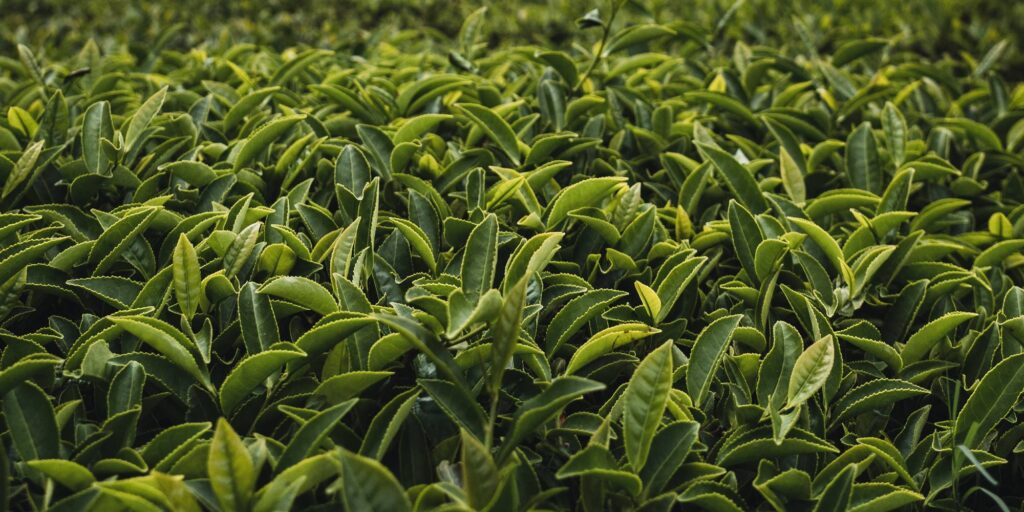I have quite a few herbs in my garden, all of which I dry out and use in food and teas (maybe I should explore essential oils next). It really is quite simple, I pick them, place them inside my mesh drying rack and leave them to dry on their own. Easy!
I decided it was a good idea to buy my own tea plant and make my own tea. What I hadn’t considered was the process that tea leaves went through before I purchased them in the shop. Nor had I realised that the tea plant alone produced more than just one variety of tea.
In this blog I thought I would share my research with you.
Types of Tea
There are five main teas, also known as “true tea”, that are crafted from the Camellia Sinensis plant. The different flavours of those teas come from the way that they are processed. The five main teas are as follows.
- Black tea
- White tea
- Green tea
- Oolong tea
- Pu-erh tea
I will try to summarise the main steps that tea goes through during processing. Not all teas go through all the processing steps nor are they all processed the same within each step. At the beginning of each section I will list which teas go through the step being described.
Stages of Tea Processing:
- Harvesting
- Withering
- Disruption/Bruising
- Oxidation
- Fixation
- Rolling
- Drying

1. Harvesting:
Black, White, Green, Oolong and Pu-erh
The picking process can be quite intricate. Although it is possible for picking to be done with machinery, most of the picking is still done by hand because handpicked leaves produces the highest quality tea.
Handpicked tea leaves generally are subject to less damage than machine picked leaves. Additionally, hand pickers can be more selective about what they choose to harvest than a machine.
Younger tea leaves craft the most desirable tea. They produce higher caffeine and antioxidants. When harvesting pickers will pick the top two leaves of the plant and the bud attached to them.
2. Withering:
Black, White, Green, Oolong and Pu-erh
After harvesting, tea leaves will go through a withering process designed to reduce the content of water in the leaves to allow them to later be rolled without leaf damage or breakage.
Tea leaves generally contain an average of 80-85% water after picking. Before processing this excess water needs to be reduced to at least 70% but in some cases 55% before it can move onto the next step in the process.
3. Disruption:
Black, Green and Oolong
During this process, the leaves are bruised. The bruising is done to rupture the cell walls of the leaves which, when in contact with oxygen will encourage oxidation.
This process has a large impact on the flavour of the tea produced. Black tea for example will undergo more bruising than green tea.
4. Oxidation:
Black, Green, Oolong and Pu-erh
Oxidation, also known as fermentation, is the process of leaving the leaves exposed to oxygen in a climate-controlled environment where the leaves will turn darker. The tea producer is responsible for deciding the environment the leaves are to be left in and when the process is completed. The process is different for each of the types of tea that go through oxidation.
5. Fixation:
Black, Green, White, Oolong, and Pu-erh
To stop the oxidation process, the leaves are heated. This can be done via a variety of methods from steaming, roasting and frying the leaves. The method chosen is another element of the tea production process that will alter the taste of the tea in the end.
6. Rolling:
Black, Green, Oolong and Pu-erh
You may have noticed when purchasing tea leaves that the leaves are quite often perfectly rolled up. This is by design. Tea leaves may have been rolled by hand or using a machine and it is done for a few reasons. Firstly, to create the desired shape, but also to release the oils and juices inside the leaves to bring out the flavour in the tea.
7. Drying:
Black, White, Green, Oolong and Pu-erh
In preparation for the sale of the tea the leaves will then be dried. Again, there are multiple methods for this process, from baking, sunning, panning or air drying. The most common method is baking.
8. Ageing:
Pu-erh and Green
This step is not required for all teas, but for those that it is required for it is done to produce the desired final flavour of the tea. Green teas for example will taste quite bitter if it does not undergo this final aging step.
As a part of the aging process the tea leaves will undergo additional baking of oxidation.

